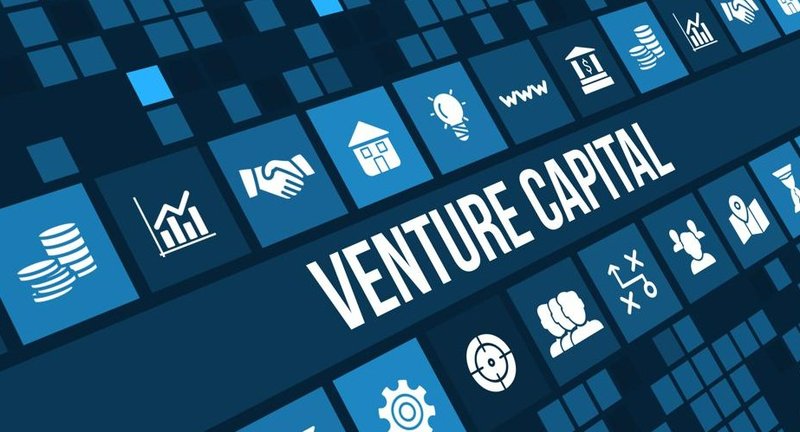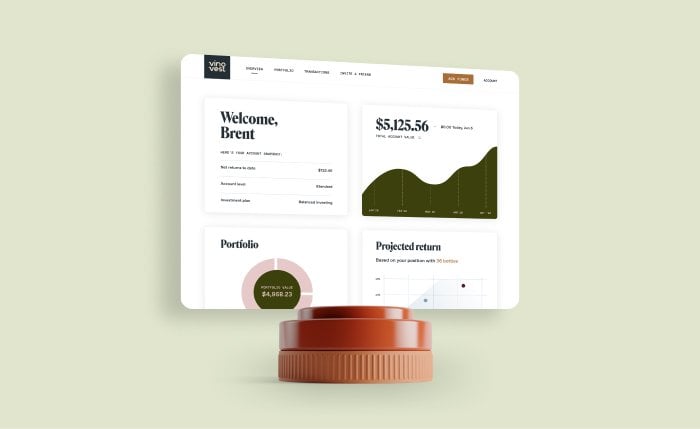How to Invest in Venture Capital: Risks, Rewards & Alternatives
Venture capital enables investors to finance startups in exchange for an ownership stake and future profits.
It’s an important financial vehicle for entrepreneurs who otherwise may not be able to acquire funding easily.
For investors, this type of private equity investing can be very profitable, but there’s also great risks involved. Only 10% of startup companies actually succeed, so you could lose part or all of your investment.
That’s why it’s vital to understand how to invest in venture capital before diving into startup financing.
Let’s explore how venture capital works, how to invest, and the risks and rewards to help you make an informed investment decision. We’ll also show you how Vinovest can help you invest in an attractive alternative - fine wine.
Further reading
- Check out this Fine Wine Investing Guide to discover how to build a winning wine collection.
- Want to have a solid investment portfolio? Explore the Best Strategies to Maximize Your Returns.
Venture Capital: How It Works
Venture capital firms and venture capital funds provide private equity financing to startups with high growth potential.
During the venture capital process, startups go through multiple rounds of financing. Let’s look at the three most important stages:

1. Seed Stage
During this stage, an entrepreneur promotes their startup business.
The entrepreneur may opt for angel investment or crowdfunding at this stage. Angel investors can kick-start early-stage startups before venture capitalists step in.
Entrepreneurs will then use seed capital for research, development, and improvement of their business model.

2. Early Stage
The startup company will then begin to scale production, operations and marketing.
Once the company starts to bring in revenue, it can request funding from venture capitalist establishments (firms or individuals) in the process of deal sourcing:
- A venture capital firm (VC firm) can finance the portfolio company with capital obtained from a pool of private investors.
- An individual venture capitalist can finance the startup (portfolio company) with personal funds.
This round of venture capital funding is called Series A. Other rounds of venture capital funding may follow - Series B and C.

3. Late Stage
When the private company starts preparing for mergers and acquisitions, or an IPO (Initial Public Offering), it may embark on additional VC funding rounds (Series D, E).
This is when venture capitalists typically exit the startup.
Next, let’s see how you can start your startup equity investment journey.

How To Invest in Venture Capital
As an investor, you can provide financing to startups directly or through a venture capital firm or VC fund.
Venture capital firms and venture capital funds pool capital from various investors and decide on the best venture capital deal to invest in on your behalf.
But, do you need to be accredited to become a venture capital investor?
You don’t have to be an accredited investor to invest in venture capital.
However, the SEC limits how much non-accredited investors can invest over a year (your individual limit is based on your net worth and income.)
Since startups usually require a substantial VC investment (typically over $100,000), unaccredited investors may not meet the requirements for this type of private equity investing
On the other hand, accredited investors have no such restrictions.

Difference Between Accredited and Non-Accredited Investors
According to the SEC’s accreditation requirements, to qualify as an accredited investor you need to:
- Either have an annual income of at least $200,000
- Or have at least $1 million in net assets
The SEC allows individuals to qualify as accredited investors based on specific professional certifications, designations or credentials.
If you’re interested in funding different startups but aren’t an accredited investor, consider investing through other avenues, such as crowdfunding platforms.

What Are Venture Capital Funds?
Sometimes venture capitalists and venture capital firms (like Andreessen Horowitz and Cambridge Associates) will group multiple startup investments into a venture capital fund.
The venture fund, run by a general partner (also known as a fund manager), is similar to a hedge fund - both representing a pooled equity investment. However, a venture fund invests only in startups and this makes it less liquid than a hedge fund.
Individual and institutional investors in the venture capital fund are known as limited partner investors. Examples of limited partner venture capital investors include:
- Corporate pension funds
- Family trusts
- Sovereign wealth funds
Now, let’s explore the ups and downs of venture capital financing.
Venture Capital Investing: Rewards vs. Risks
Investing in venture capital can be extremely rewarding, however there are a few risks that you should also be aware of.
Let’s look at both these aspects:

Venture Capital Rewards
Some of the greatest gains associated with venture capital investment include:
- Potentially high ROI: The Corporate Finance Institute reports that successful venture capital investments can return between 10 and 100 times.
- Portfolio diversification: Venture capital investments provide a means of portfolio diversification, as they have a different risk-return profile from traditional investments like stocks and bonds.
Ultimately, many investors enjoy being involved in an early-stage startup, especially industry-disrupting ventures with innovative offerings. But they also present significant risks.

Venture Capital Risks
The risks to consider when investing in venture capital include:
- High cost: Investing in venture capital can be costly compared to other investments. Most venture capital firms charge a 2% asset management fee and additional performance fees of around 20%. So, the venture capital firm could collect over 20% of the profits from your VC investment.
- Difficulty accessing capital: Once you invest in a startup venture, you will typically be locked into a long-term agreement. Many startups can take 5-10 years or even longer to become profitable, and you would have to wait quite long before you start receiving yields.
- Lack of transparency: Public companies are typically watched and evaluated by research analysts, so there’s a high level of transparency when investing in them. However, with startups, this isn’t the case.
It’s very difficult to know whether the company will succeed as there are many variables to consider.
Before investing, it’s critical to research the venture capital firm (or VC fund), the startups it invests in, and the company owners. Even if you do all your homework, there’s no guarantee that your investment will yield returns.
Now:
Would you prefer a more transparent alternative that offers excellent returns on investment?
Let’s look at fine wine investment and a simple way to invest.
Investing in Fine Wine: A 100% Liquid, Transparent Investment Alternative

Alternative assets like fine wine perform well in any market condition and have proven to return impressive yields.
Interestingly, fine wine provided a 13.6% annualized return over the last 15 years, outperforming most global equities. So, fine wine investors can double their capital every six or seven years.
Fine wine is also less volatile than other investment categories, and the longer you retain a wine, the more valuable it becomes. This is due to a supply and demand imbalance. As people consume a particular wine, it becomes rarer, and the value of the remaining bottles increases.
So, how do you invest in rare, fine wine bottles?
The easiest way to invest is through the powerful wine investment platform Vinovest. This platform helps you buy, store, and sell wines from wine regions around the world.
You can sell your wine at any time. But remember, fine wine typically peaks in value after 5-20 years. Our expert advisors will guide you on the best liquidity options and periods to sell so you can maximize your ROI.
Venture Capital: A Smart Investment or a Shot in The Dark?

Investing in venture capital can help diversify your portfolio, and in rare cases, you can yield massive returns.
However, it can take years and even decades before you start seeing decent returns on your investment. You could also lose your capital if the company doesn’t succeed.
On the other hand, if you invest in fine wine through Vinovest, you’ll have complete control over when you buy and sell your bottles. Fine wine is also a much more reliable investment.
Visit the Vinovest website to learn how you can easily trade rare bottles of wine whenever you please, right from the app.



